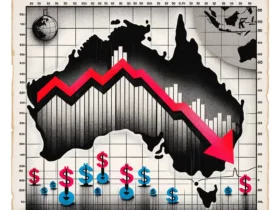If you’re looking to start investing in stocks but don’t know where to begin, it may seem like an insurmountable challenge. But there are ways to invest in stocks that make sense even if you’re just starting out or don’t have much money to invest initially. Here are eight of the best ways to get started on your way to smart stock investing.
The interest you earn on your investments will earn interest, which will then earn even more interest. This is what’s known as compounding, and it can result in a substantial boost to your investment returns over time.
First and foremost, it’s important to be aware that growth stocks are inherently riskier than value stocks. While there is a chance of seeing big gains from investing in growth companies (think Apple from 2003–2007), these potential windfalls come with an equally high probability of loss. You can even invest if you don’t have much money. According to professionals at SoFi Invest, “Beginners can look for investing apps and brokerages that offer low or no trading fees or commissions.”
Set time aside each week to review your goals so you can check how you’re doing and make any changes. You’ll also want to know what your goals are, which will help you build a plan for meeting them. If you don’t set aside time to stay on track, it’s easy to become discouraged when things aren’t going well or lose sight of your big picture.
How can you determine whether an investment has growth or value? Simply put, growth stocks are companies with strong revenues and earnings per share. Conversely, value stocks are firms that look undervalued based on their price-to-book ratio or P/E ratio.
If you’re a beginner investor, individual stocks are way too risky. The best thing you can do is invest in index funds or ETFs that track major stock indexes like NYSE, S&P 500, or Nasdaq. That way, you won’t be risking your money on one company alone; rather, it will be spread across hundreds of companies within an entire industry.
First, it’s important to understand that stock charts don’t reflect prices directly. Instead, they display changes in a company’s share price over time. If you use charts for anything other than learning about stocks and their movements, you might as well be practicing magic rather than investing.
ETFs allow investors to gain instant exposure to a basket of stocks. You can achieve this by holding a single ETF that holds dozens or hundreds of individual stocks or multiple ETFs representing various sectors, asset classes, and geographies. We discuss related to Investing in Stocks in 2022.
Dollar-cost averaging involves buying into an investment at a set interval over time. For example, if you’re starting out with $100, you could put away around $10 per week. By doing so, you can reduce your risk of getting caught in an asset downturn immediately following your initial purchase.
Before you start investing, you should have a few foundational things in place. First and foremost is an emergency fund. The second is a sufficient amount of cash that you can use for other financial goals (such as starting your business). When those two items are complete, you’re ready to start buying stocks.







